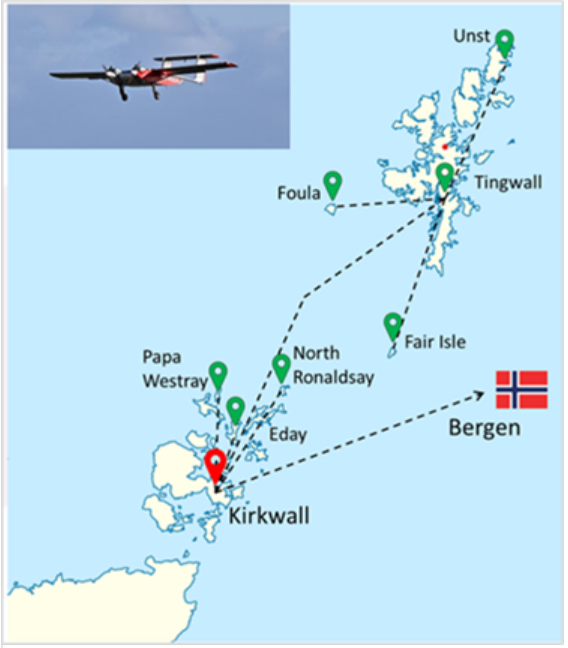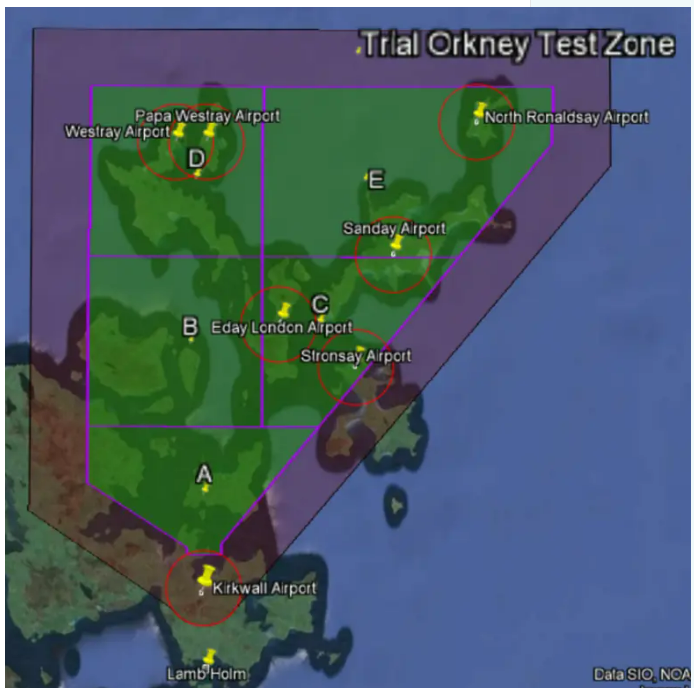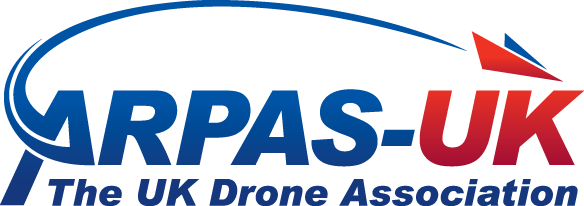A blueprint for effective integration of drones with crewed aviation into unsegregated airspace?
Airspace is a critical piece of infrastructure requiring modernisation to accommodate a new generation of crewed and uncrewed aerial vehicles. As part of a pioneering project, Highlands and Islands Airports Limited (HIAL), supported by Egis, have proposed an airspace design and operational concept that would allow drones to be integrated in an operational trial alongside crewed aircraft in uncontrolled airspace in the Orkney Islands. If successful, the trial will provide a blueprint that could be rolled out more widely across Scotland and the UK. Egis’ Richard Derrett-Smith and HIAL’s Pat Nolan explain more.

Outside of major conurbations and airports, as much as 70% of the UK’s airspace is uncontrolled, meaning that anybody can fly there, subject to some basic rules. This contrasts with controlled airspace, which is managed by air traffic controllers, with rules and communication protocols to keep airspace users safely separated. The problem is that the existing airspace structures and associated Air Traffic Service regulation for both controlled and uncontrolled aviation cannot currently accommodate the needs of all types of aircraft, including one of the fastest growing user groups: drones.
In Scotland’s Orkney Islands, uncrewed medium and heavy lift drones (100 – 300 kg) are already being used for fast collection and delivery of medical supplies, pharmaceuticals, and perishable goods, like shellfish – which are transported from outlying islands back to a hub airport at Kirkwall and then flown onward to places like London in a fraction of the time it would take for them to travel by ferry. However, to date, these trials have all taken place using Temporary Danger Areas (TDAs) which restrict other airspace user activity and are not sustainable for commercial operations. The objective of this project is therefore to develop a trial airspace test zone based on a more permanent, less restrictive form of airspace, where future sustainable aviation technology and use cases can be demonstrated.
HIAL’s Pat Nolan has been working with Egis’ Richard Derrett-Smith and Stewart Wallace on developing the Trial Orkney Test Zone or TOTZ. This pioneering project is part of the Sustainable Aviation Test Environment (SATE) and is part funded by the UK government through the UK Future Flight Challenge programme. HIAL is both an airport operator (with 11 regional airports) and an Air Navigation Service Provider, and so it plays a vital role in supporting essential lifeline services, connectivity and socio-economic development within the rural and island communities. Pat says: “Our aim is to establish the UK’s first low carbon sustainable aviation test centre, including a dedicated airspace test zone, to be located at a commercial airport.” Using Kirkwall Airport as its base, the test zone has been designed to minimise the impact on Kirkwall airport’s operations. Kirkwall is a licensed commercial airport that provides services for approximately 12,000 aircraft movements carrying 130,000 passengers per year, the majority of which by Loganair the airport’s principal operator. Kirkwall airport, which provides an aerodrome and procedural approach service, is located in Class G airspace and has a suite of both conventional and RNP instrument approach procedures.

Using Kirkwall Airport as its base, the test zone has been designed to minimise the impact on Kirkwall airport’s operations. Kirkwall is a licensed commercial airport that provides services for approximately 12,000 aircraft movements carrying 130,000 passengers per year, the majority of which by Loganair the airport’s principal operator. Kirkwall airport, which provides an aerodrome and procedural approach service, is located in Class G airspace and has a suite of both conventional and RNP instrument approach procedures.
Richard says: “From the outset our approach has been to align our solution with the UK CAA’s vision for modernising airspace and with the recently released Future of Flight Action Plan.”
The TOTZ extends northwards over the Orkney archipelago and is subdivided into 5 subzones, such that only those zones required to support a particular trial or operational activity need be activated, thereby leaving the other TOTZ subzones available to other aircraft. This is consistent with the CAA’s Flexible Use of Airspace policy to ensure equitable access to airspace for all airspace users. The TOTZ airspace design ensures separation from Kirkwall’s instrument approach procedures which will minimise disruption to Kirkwall’s scheduled commercial flights.
Richard continues: “We have included an emergency buffer zone around the TOTZ to ensure that the drone’s Detect and Avoid (DAA) system, air traffic control and/or the drone pilot can take appropriate action to neutralise any potential conflict if a non-participating aircraft unexpectedly enters the emergency buffer zone.”

Airspace design: Trial Orkney Test Zone (TOTZ)
Designed to minimise impact on Kirkwall Airport operations
Of course, airspace is not the only driver in terms of managing risk. The HIAL and Egis team also considered the critical role of air traffic services in providing effective oversight to the TOTZ operations. Communications, navigation and surveillance technology proportional to the scale and complexity of airspace users is also part of the solution, and, coupled with the technology on the drone, will need to integrate effectively with the airspace design and air traffic service delivery to minimise operational risk and support sustainable commercial operations at scale.
Concludes Pat: “The SATE project and HIAL are confident that the TOTZ trial will be accepted by the UK CAA into its Regulatory Sandbox (Temporary Reserved Area) programme, enabling us to deliver the TOTZ airspace trial in the Orkneys based on integrated operations in unsegregated airspace from Kirkwall airport. The outputs from the TOTZ trial will provide HIAL with the data and experience to establish a more permanent trial airspace known as the Orkney Trial Zone (OTZ). The OTZ will provide the blueprint for HIAL to implement a similar hub and spoke airspace model across the HIAL airport estate.”
Adds Richard: “We see the TOTZ trial as vital first steps towards achieving integrated RPAS operations in unsegregated airspace, which is a European, if not global aim these days. It will also generate some key learning points for uncrewed aerial system operators, who need to understand how they can work from a licensed commercial airport.”
Read more about about our work on drone integration in the UK. For more information about the Trial Orkney Test Zone (TOTZ), contact Richard Derrett-Smith, Director Egis.

Richard Derret-Smith
Associate Director, Aviation
Feature image credit: Windracers
Egis is a member of ARPAS-UK.


